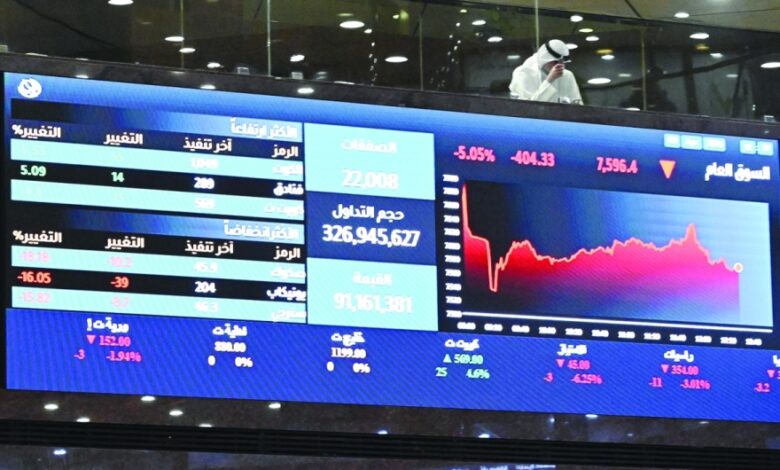KSE leads Gulf market losses amid regional tensions and Fed uncertainty

The Kuwait Stock Exchange (KSE) experienced sharp declines across all major indices on Wednesday, driven by heightened investor caution stemming from escalating military tensions in the region and global anticipation surrounding the U.S. Federal Reserve’s upcoming decision on interest rates.
Market capitalization at the KSE dropped by 1.45 percent, translating to a loss of approximately 696 million dinars. This effectively wiped out a significant portion of the 997 million dinars in gains registered over the previous two sessions, reports Al-Rai daily.
Kuwait posted the steepest drop among Gulf markets, leading a broader regional downturn that saw Gulf Cooperation Council (GCC) bourses collectively lose 0.7 percent, or about $25.7 billion. The Dubai Financial Market followed Kuwait’s losses with a 1.2 percent drop (equivalent to 2.6 billion), Bahrain slipped 1.12 percent (about 300 million), and Saudi Arabia’s Tadawul lost 1.2 percent (approximately 16.1 billion). The Qatari exchange fell by 0.61 percent (800 million), while Abu Dhabi’s market declined 0.4 percent, shedding about 3.7 billion.
On the local front, Kuwait’s Premier Market Index fell 1.56 percent (135.8 points), the General Index declined 1.45 percent (116.7 points), the Main 50 Index dropped 1.32 percent (91.85 points), and the Main Index lost 0.9 percent (63.17 points). Losses were widespread across 12 sectors, led by technology (-6.21 percent), industry (-4.33 percent), consumer services (-3.27 percent), and basic materials (-3.26 percent). The energy sector bucked the trend, gaining 0.78 percent.
Despite the negative performance, liquidity in the market improved. Trading value rose 3.9 percent to KWD 111.97 million, even as the volume of traded shares slipped 4.6 percent to 512.44 million. The number of transactions increased 17.1 percent to 29,460, suggesting a segment of trading activity was driven by asset repositioning or profit-taking.
Market analysts attributed the losses to geopolitical uncertainty and concerns over the Fed’s interest rate stance. While many expect the Federal Reserve to hold rates steady for the fourth consecutive time, at a range between 4.25 percent and 4.5 percent, the lack of clarity continues to weigh on investor sentiment.
Oil prices, which have surged roughly 10.5 percent since last Friday, are also influencing regional market dynamics. Analysts warn that upcoming trading sessions will likely be shaped by both geopolitical developments and economic indicators, especially in relation to oil and global monetary policy decisions.












